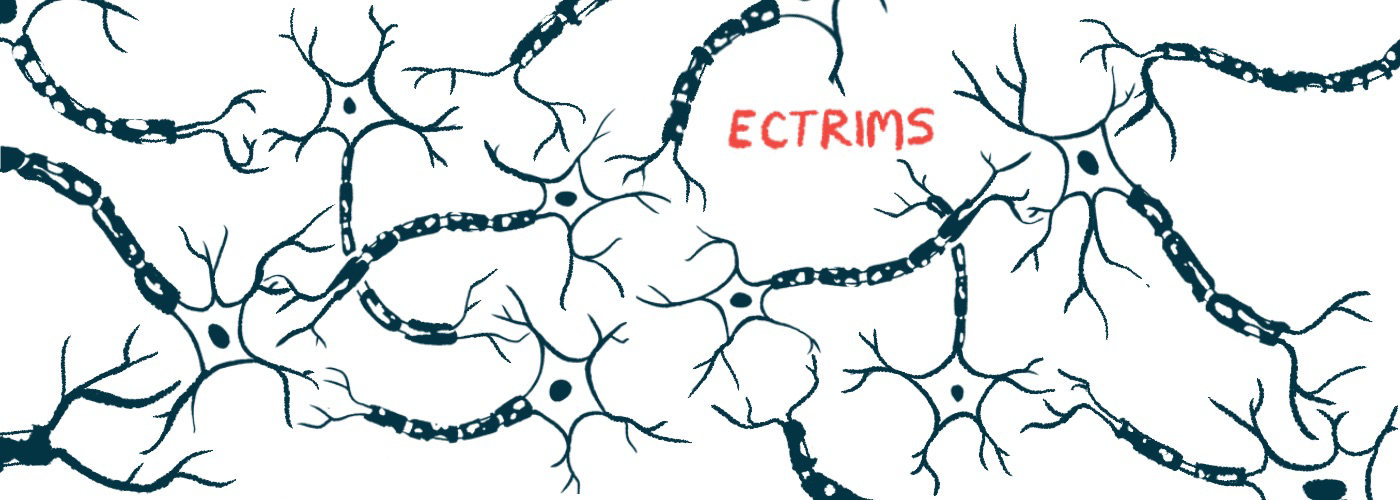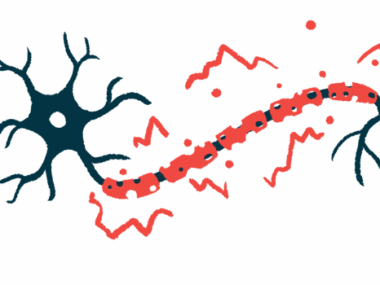#ECTRIMS2022 – EBV Antibodies Precede Early Nerve Damage Signs
Biomarker increase seen years before disease onset, after EBV antibodies appear
Written by |

An infection with the Epstein-Barr virus (EBV) consistently preceded elevations in neurofilament light chain (NfL), an early biomarker of nerve cell damage, in people who went on to develop multiple sclerosis (MS), new data show.
An increase in NfL levels, which is thought to occur before the clinical emergence of MS, was observed about 5–10 years before the onset of disease, whereas antibodies against EBV were detected at high levels as early as 10–15 years before onset. NfL elevations were never detected among the few pre-MS individuals who didn’t develop EBV antibodies.
This is according to “Increase in EBV serologies precedes neuroaxonal damage in pre-symptomatic multiple sclerosis,” an oral presentation given at the European Committee for Treatment and Research in Multiple Sclerosis (ECTRIMS), being held Oct. 26–28, both virtually and in Amsterdam, the Netherlands.
“We argue that this strengthens the theory of EBV infection as a possibly necessary condition for MS development,” Daniel Jons, of the University of Gothenburg, Sweden, said in the presentation.
EBV has recently emerged as a leading cause of MS, with antibodies against the virus – indicative of a prior infection – being evident in virtually all MS patients before the onset of the neurodegenerative disease.
Earlier this year, a groundbreaking study involving more than 10 million U.S. military service members showed that a prior EBV infection raises the risk of developing MS by about 32 times.
The study also found that blood NfL levels increased in people who went on to develop MS, but only after they had been infected with EBV, establishing EBV infection as a likely necessary, but not sufficient factor for developing MS.
NfL levels higher after EBV infection
To learn more about the timing of EBV infection and NfL increases, Jons and his team examined blood samples collected over time in presymptomatic people who were later diagnosed with relapsing-remitting MS.
Patients were identified from the Sweden MS Register housed in any of six Swedish biobanks and included in the analysis if they had a blood sample taken before their MS symptoms emerged.
Ultimately, 669 individuals were identified, and matched in terms of biobank location, sex, age, and sampling time with an equal number of healthy individuals, whose blood samples were also analyzed.
Pre-MS patients had a median age of 25 (range, 4–39) at the time of sampling, which were taken a median of nine years before MS onset (range, 1–32).
Researchers examined antibody levels against two EBV proteins: EBNA1, found in an older or latent version of the virus, and gp350, which is more commonly found in active forms.
Results showed anti-EBNA1 antibodies were significantly elevated in pre-MS patients compared with healthy controls about 10–15 years before the clinical onset of MS. Data for gp350 “shows a similar picture from 10–15 years,” Jons said.
But NfL levels increased only after EBV antibodies did, showing significant elevations about 5–10 years before the onset of MS and steadily increasing as clinical onset approached.
No overall correlations between NfL levels and EBV antibodies were observed, but the team found that elevations in NfL were not detected in the 7% of the pre-MS group who never developed EBV antibodies.
“We found no evidence of [nerve fiber] damage having started in the small EBV negative presymptomatic group,” Jons said, noting that “this group is, however, small and younger than the EBV-positive group.”
After adjusting for age and group size, data showed that 8% of EBV-positive patients had a higher NfL level than the highest level observed in the EBV-negative group. This demonstrates that “samples with a high [NfL levels] are concentrated to the EBV-positive group,” Jons said.
Only nine patients remained EBV-negative in the last 10 years before the clinical onset of MS.
The findings overall support the theory that EBV precedes even early signs of MS. “Together with its biological characteristics, this temporal order confirms the role of EBV as a trigger of MS,” the researchers wrote.
Note: The Multiple Sclerosis News Today team is providing in-depth coverage of the ECTRIMS Forum 2022 Oct. 26-28. Go here to see the latest stories from the conference.






